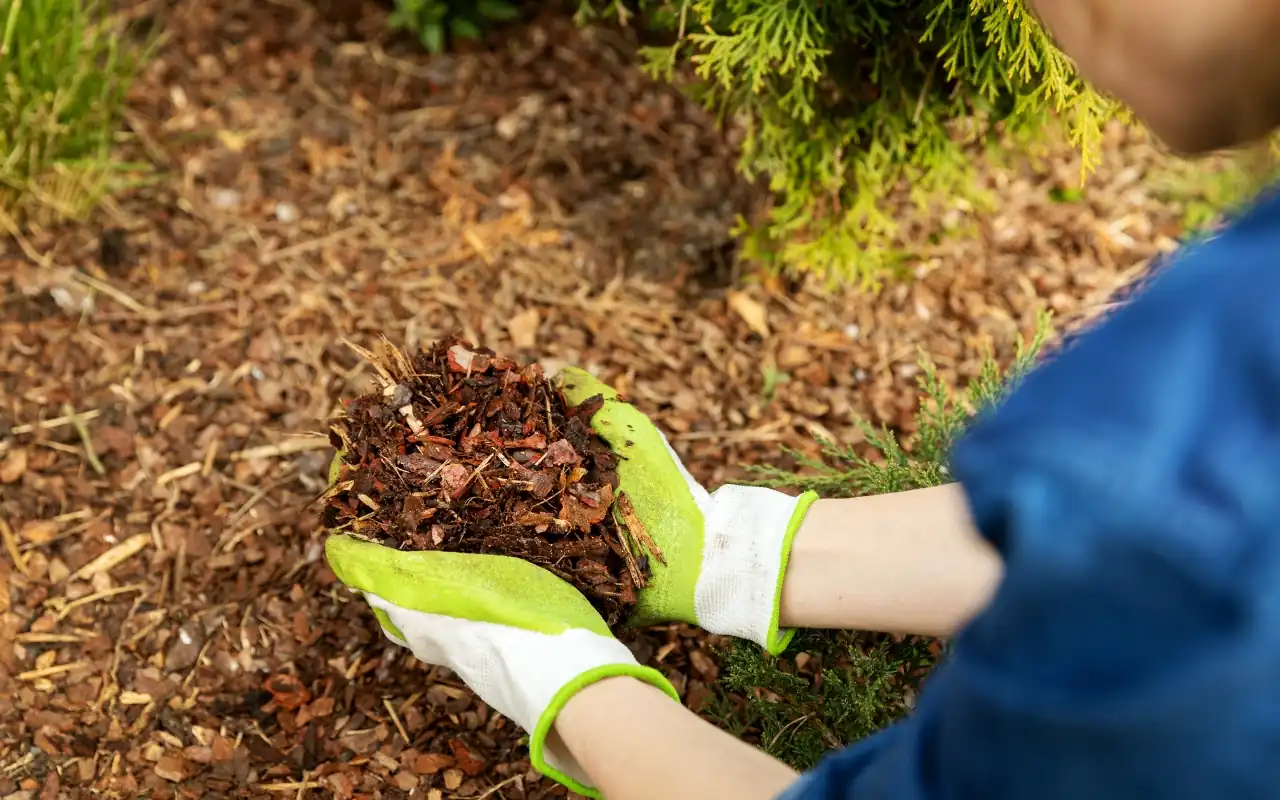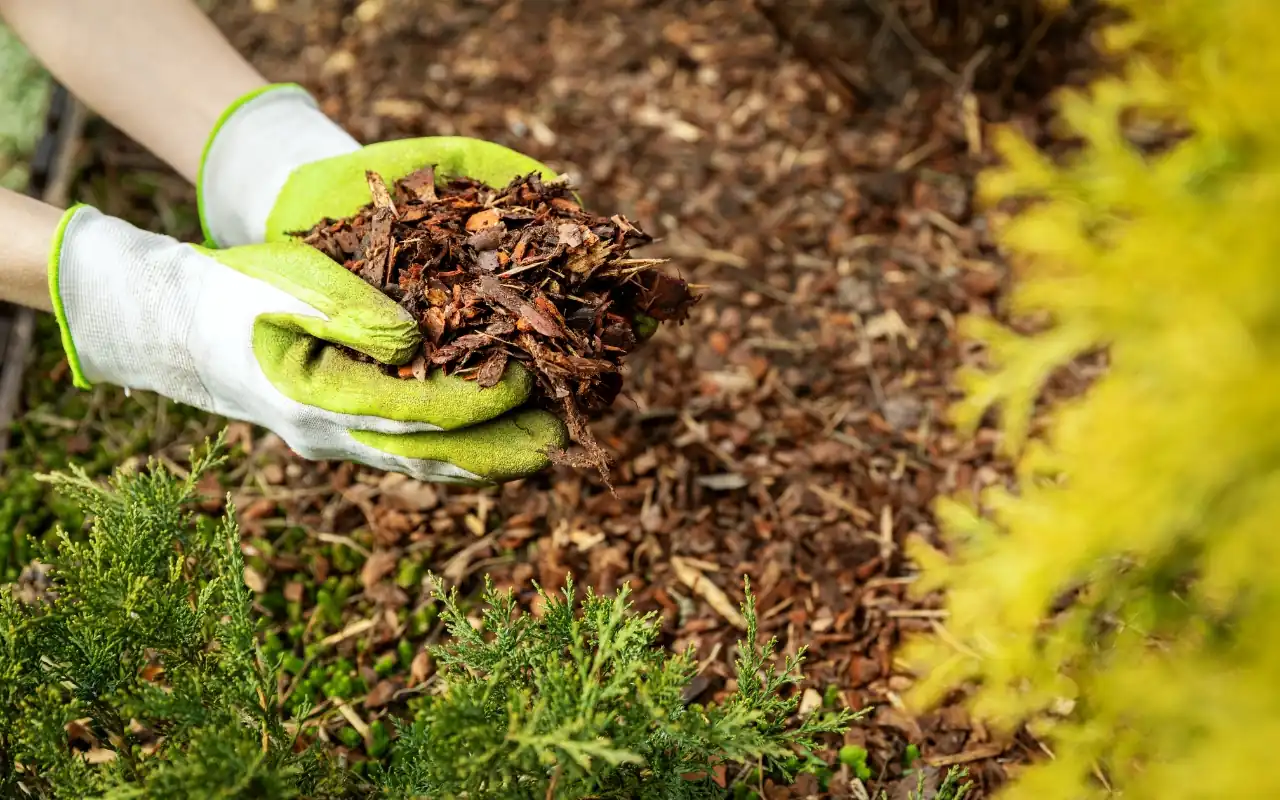
Perfect Mulching Secrets to Enhance Your Landscape
Discover the best mulching secrets that can transform your landscape. Imagine a garden that thrives, with plants that look lush and vibrant. Have you ever wondered how professional landscapers achieve such stunning results? The secret lies in proper mulching techniques. You can create a beautiful and healthy garden by understanding and applying these methods.
Let’s dive into these mulching secrets and make your landscape the envy of the neighborhood.

Unlocking the Best Mulching Secrets for Your Garden
Firstly, mulching is an essential practice for any gardener. The right mulching secrets can enhance your garden’s health and appearance. In this section, we will explore the different aspects of mulching that you need to know.
What is Mulching?
Mulching involves covering the soil with a protective layer. This layer can be made from organic materials like wood chips, straw, or compost. It helps retain moisture, suppress weeds, and improve soil health.
Benefits of Mulching
Mulching offers numerous benefits for your garden. Here are some key advantages:
- Moisture Retention: Mulch helps soil retain water, reducing the need for frequent watering. This is especially beneficial during dry spells.
- Weed Suppression: A thick layer of mulch prevents weed seeds from germinating, keeping your garden weed-free. Thus, it reduces the need for herbicides.
- Soil Improvement: Organic mulch decomposes, adding nutrients to the soil and enhancing its fertility. Consequently, this leads to healthier plants and better yields.
- Temperature Regulation: Mulch acts as an insulator, stabilizing soil temperatures and protecting plant roots from extreme temperatures.
- Erosion Control: Mulch helps prevent soil erosion by reducing the impact of rainwater. Therefore, it keeps your garden soil intact and healthy.
Choosing the Right Mulch
Selecting the right mulch is crucial. Here are some common types and their uses:
- Wood Chips: Ideal for flower beds and around trees. Besides, they decompose slowly, providing long-term benefits.
- Straw: Great for vegetable gardens. Straw breaks down faster, adding organic matter to the soil.
- Compost: Adds nutrients and improves soil structure. Compost is perfect for all types of gardens.
- Pine Needles: Good for acid-loving plants like azaleas and blueberries. Pine needles are long-lasting and add a pleasant aroma to the garden.
- Grass Clippings: Readily available and rich in nitrogen. Also, make sure they are dry and weed-free.
Remember, the type of mulch you choose will depend on your garden’s needs and the specific plants you are growing.
How to Apply Mulch
Applying mulch correctly is as important as choosing the right type. Follow these steps for effective mulching:
- Prepare the Area: First, remove weeds and debris from the area you want to mulch. This ensures the mulch will have direct contact with the soil.
- Layering: Spread a 2-4-inch layer of mulch around your plants. To prevent rot, avoid piling mulch against the stems.
- Maintenance: Mulch should be replenished as it decomposes to maintain its effectiveness. Check the mulch layer periodically and add more as needed.
- Watering: Finally, water the mulch layer after application. This helps settle the mulch and keeps it in place.
Best Practices for Mulching
To get the most out of your mulching efforts, follow these best practices:
- Timing: Apply mulch in late spring and fall. This timing helps protect plants during hot summers and cold winters.
- Quantity: Use the right amount of mulch. Too much can suffocate plant roots, while too little won’t be effective.
- Organic vs. Inorganic: Organic mulches decompose and improve soil health, while inorganic mulches like gravel do not. Choose based on your garden goals.
FAQs about Mulching
Q: How often should I mulch my garden?
A: It’s best to mulch once or twice a year. Indeed, spring and fall are ideal times.
Q: Can I use grass clippings as mulch?
A: Yes, but make sure they are dry and weed seeds-free. Wet grass clippings can mat down and create a barrier.
Q: Is there a downside to mulching?
A: Over-mulching can suffocate plant roots. Always use the recommended 2-4 inches to avoid this issue.
Q: What is the best mulch for vegetable gardens?
A: Straw and compost are excellent choices. Also, they add organic matter and nutrients to the soil.
Q: Can mulch attract pests?
A: Some organic mulches can attract pests. Nevertheless, using cedar or cypress mulch can help repel insects.
Q: How do I prevent mulch from blowing away?
A: Watering the mulch after application helps it settle. Using heavier mulches like wood chips can also prevent this issue.
Mulching is a simple yet powerful way to boost your garden’s health. You can achieve a vibrant and thriving landscape by following these mulching secrets.

Mulching: The Key to a Thriving Garden
In conclusion, mastering the art of mulching can significantly enhance your garden’s health and beauty. Mulch offers numerous benefits, including retaining moisture, suppressing weeds, and improving soil. As a result, remember to choose the right type of mulch for your garden, apply it correctly, and maintain it regularly.
Incorporating these mulching secrets is essential for a lush, vibrant garden. Contact us today to learn more or get professional assistance with your landscaping needs. Let’s make your garden thrive together!
